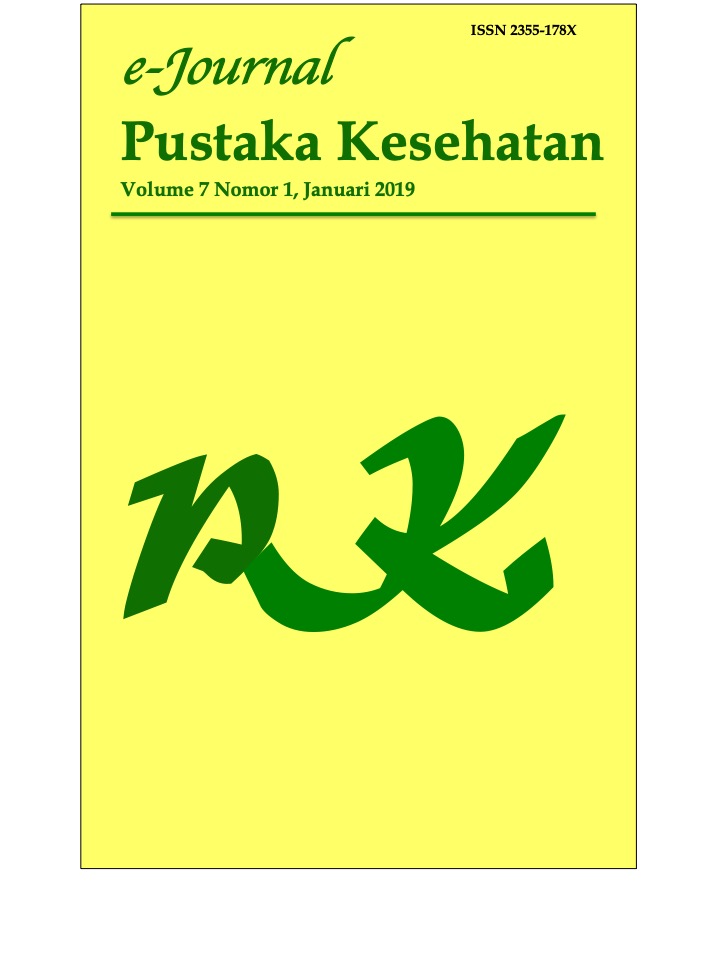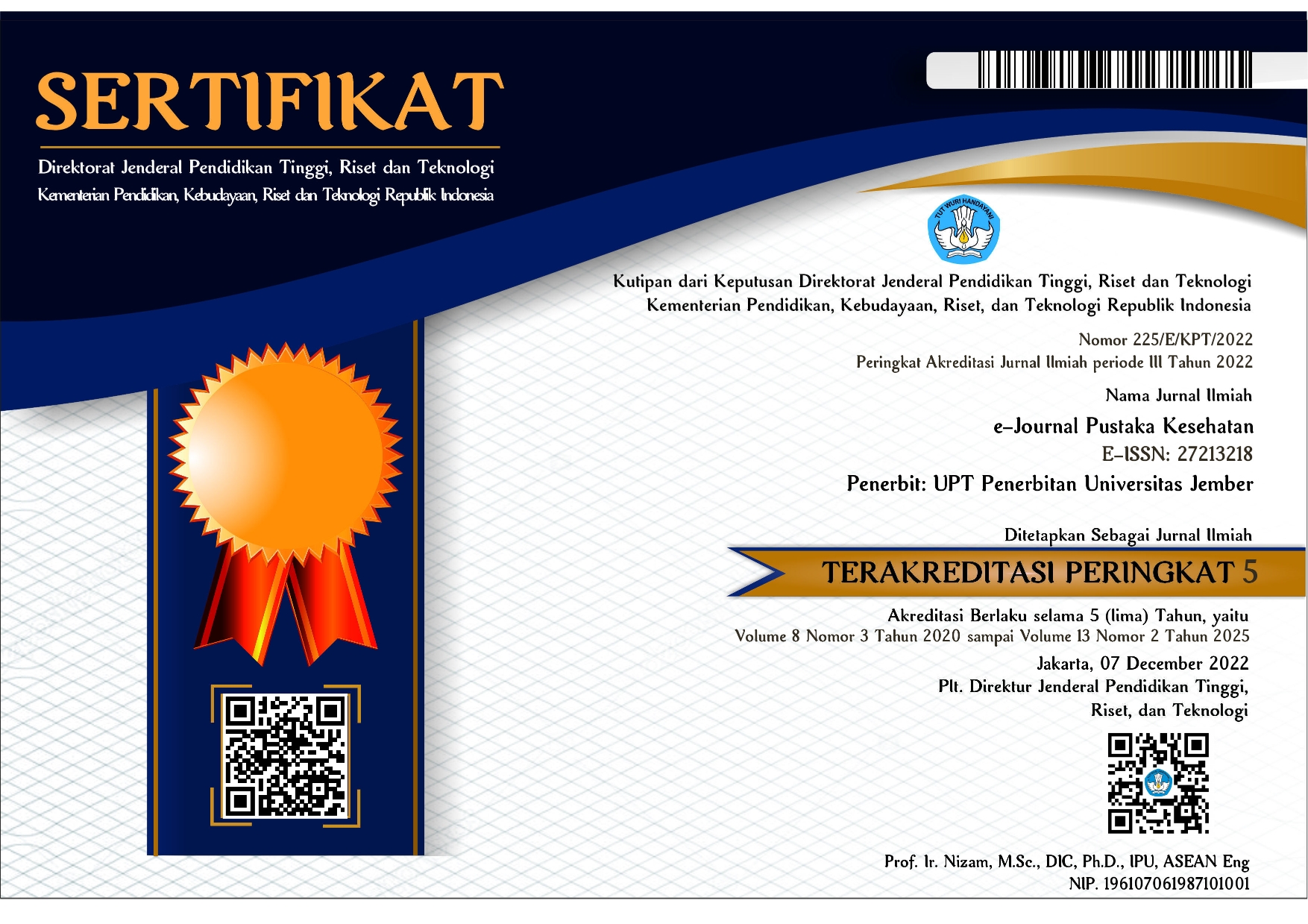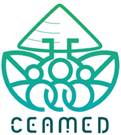Aktivitas Membran Bakiko (Bayam-Kitosan-Kolagen) terhadap Ekspresi Matriks Metaloproteinase-9 pada Luka Bakar Derajat II
DOI:
https://doi.org/10.19184/pk.v7i1.17593Keywords:
Spinach, Chitosan, Collagen, Burn wound, Matrix Metalloproteinase-9Abstract
Matrix metalloproteinase-9 (MMP-9) plays an important role in regulating the degradation and deposition extracellular matrix (ECM) that are important for wound reepithelization. However, excessive protease activity can lead to delayed wound healing. Kaemferol in spinach can inhibit the activity of MMP-9. Chitosan and collagen can help tissue growth and have an antimicrobial effect. Chitosan-collagen membranes have been widely used for wound healing but, the results are unsatisfactory. Therefore, the researcher wanted to know the activity of bakiko (Spinach-Chitosan-Collagen) membrane to MMP-9 expression on second degree burn with immunohistochemical method. This research was true-experimental laboratories design with post test only control group design. The experimental animals used were 36 white wistar rats (Rattus novergicus) male, divided into 4 groups ie control group, negative control, positive control (bioplacenton), and treatment (bakiko membrane). Data were obtained by calculating MMP-9 using ImageJ software. The analysis using anova test showed that p value less than 0.05 indicated a significant difference. This study showed that there was a decrease in MMP-9 activity by bakiko membrane in grade II burn with immunohistochemical method in wistar rats.
Downloads
References
[2] Trihono. Riset Kesehatan Dasar 2013. Badan Penelitian Dan Pengembangan Kesehatan Kementerian Kesehatan RI, 2013.
[3] Clouatre E, Gomez M, Banfield J, Jeschke MG. Work-related Burn Injuries in Ontario, Canada: a Follow Up 10-year Retrospective Study. Burns. Journal of the International Society for Burn Injuries. 2013 Jan; 39(6):1091-1095.
[4] Rowan MP, Cancio LC, Elster EA, Burmeister DM, Rose LF, Natesan S, et al. Burn Wound Healing and Treatment: Review and Advancements. Critical Care. 2015 Jun; 19:243.
[5] Caley MP, Martins VLC, O’Toole EA. Metalloproteinases and Wound Healing. Advances in Wound Care. 2015 Apr; 4(4): 225-234.
[6] Rahati S, Eshraghian MR, Ebrahimi A, Pisva H. Effect of Spinach Aqueous Extract on Wound Healing in Experimental Model Diabetic Rats with Streptozotocin. J Sci Food Agri. 2016 May; 96: 2337-2343.
[7] Fujiwara TS, Ichibori KR, Tanigawa T, Magome T, Shingaki K, Miyata S, et al. L-Arginine Stimulates Fibroblast Proliferation through the GPRC6A-ERK1/2 and PI3K/Akt Pathway. Plos One. 2014 Mar; 9(3).
[8] Choi YJ, Lee YH, Lee ST. Galangin and Kaempferol Suppress Phorbol-12-Myristate-13-Acetate-Induced Matrix Metalloproteinase-9 Expression in Human Fibrosarcoma HT-1080 Cells. Mol Cells. 2015 Des; 38(2):151-155.
[9] Mc Bane JE, Vulesevic B, Padavan DT, Mc Ewan KA, Korbutt GS. Evaluation of a Collagen-Chitosan Hydrogel for Potential Use as a Pro-Angiogenic Site for Islet Transplantation. Plos One. 2013 Okt; 8(10): e77538.
[10] Wang W, Lin S, Xiao Y, Huang Y, Tan Y, Cai L, Li X. Acceleration of Diabetic Wound Healing with Chitosan-crosslinked Collagen Sponge Containing Recombinant Human Acidic Fibroblast Growth Factor in Healing-impaired STZ Diabetic Rats. Elsevier. 2008 Jan; 82: 190-204.
[11] Wall SJ, Bevan D, Thomas DW, Harding KG, Edwards DR, Murphy G. Differential Expression of Matrix Metalloproteinases During Impaired Wound Healing of the Diabetes Mouse. The Journal Of Investigative Dermatology. 2002 July; 91-98.
[12] Dasu MR, Spies M, Barrow RE, Herndon DN. Matrix Metalloproteinases and Their Tissue Inhibitors in Severely Burned Children. Wound Repair Regen. 2003 May; 11:177–180.
[13] Rosique RG, Rosique MJ, Junior JAF. Curbing Inflammation in Skin Wound Healing: A Review. International Journal of Inflammation. 2015 Jul; 1-9.
[14] Landen NX, Li D, Stahle M. Transition from Inflammation to Proliferation: a Critical Step During Wound Healing. Cell. Mol. Life Sci. 2016 Okt; 73:3861–3885.
[15] Kirichenko AK, Bolshakov IN, Ali-Riza AE, Vlasov AA. Morphological Study of Burn Wound Healing with the Use of Collagen-Chitosan Wound Dressing. Bulletin of Experimental Biology and Medicine. 2013 Mar; 154(11): 652-656.
[16] Lipsky BA, Hoey C. Topical Antimicrobial Therapy for Treating Chronic Wounds. Clinical Infectious Diseases. 2009 Nov; 49:1541–9.
[17] Elgharably H, Roy S, Khanna S, Abas M, Ghatak PD, Das A, et al. A Modified Collagen Gel Enhances Healing Outcome in a Pre- Clinical Swine Model of Excisional Wounds. Wound Repair Regen. 2013 Apr; 21(3): 473–481.
[18] Elgharably H, Ganesh K, Dickerson J, Khanna S, Abas M, Ghatak PD, et al. A Modified Collagen Gel Dressing Promotes Angiogenesis in a Pre-Clinical Swine Model of Chronic Ischemic Wounds. Wound Repair Regen. 2014 Jan; 22(6): 720–729.
[19] Tianhong D, Masamitsu T, Ying-Ying H, Hamblin MR. Chitosan Preparations for Wounds and Burns: Antimicrobial and Wound Healing effects. Expert Rev Anti Infect Ther. 2011 Jul; 9(7): 857–879.
[20] Ramasamy P, Shanmugam A. Characterization and Wound Healing Property of Collagen–chitosan Film from Sepia kobiensis. International Journal of Biological Macromolecules. 2014 Des; 74:93-102.
Downloads
Published
Issue
Section
License
e-Journal Pustaka Kesehatan has CC-BY-SA or an equivalent license as the optimal license for the publication, distribution, use, and reuse of scholarly work. Authors who publish with this journal retain copyright and grant the journal right of first publication with the work simultaneously licensed under a Creative Commons Attribution-ShareAlike 4.0 International License that allows others to share the work with an acknowledgment of the work's authorship and initial publication in this journal.







